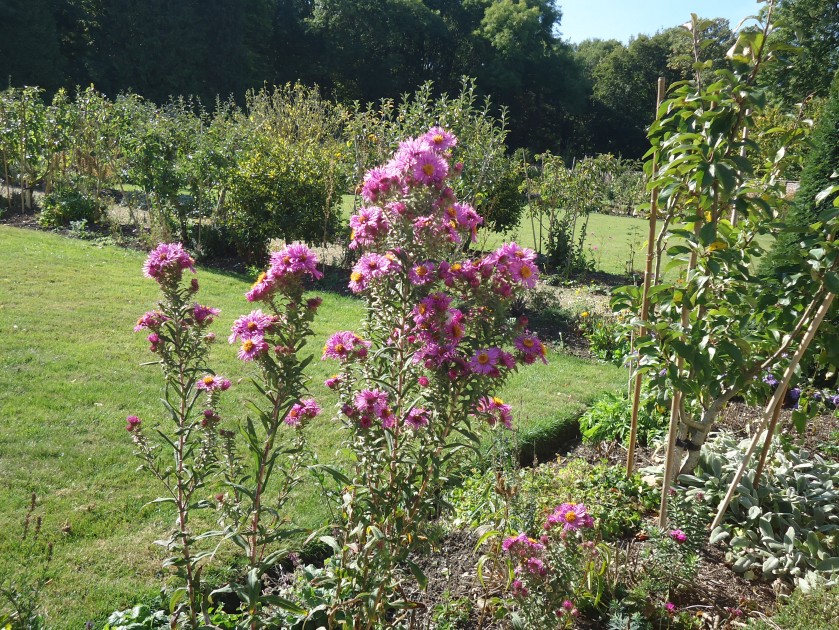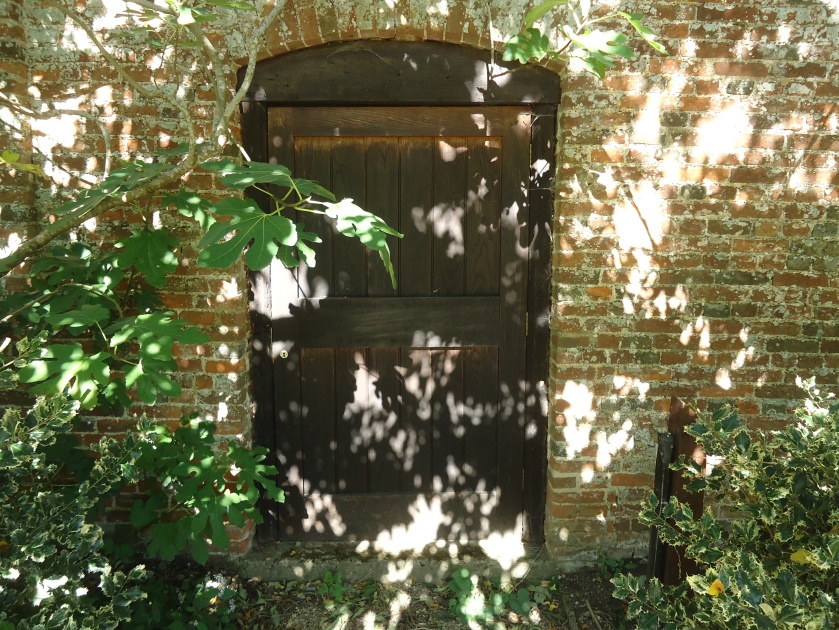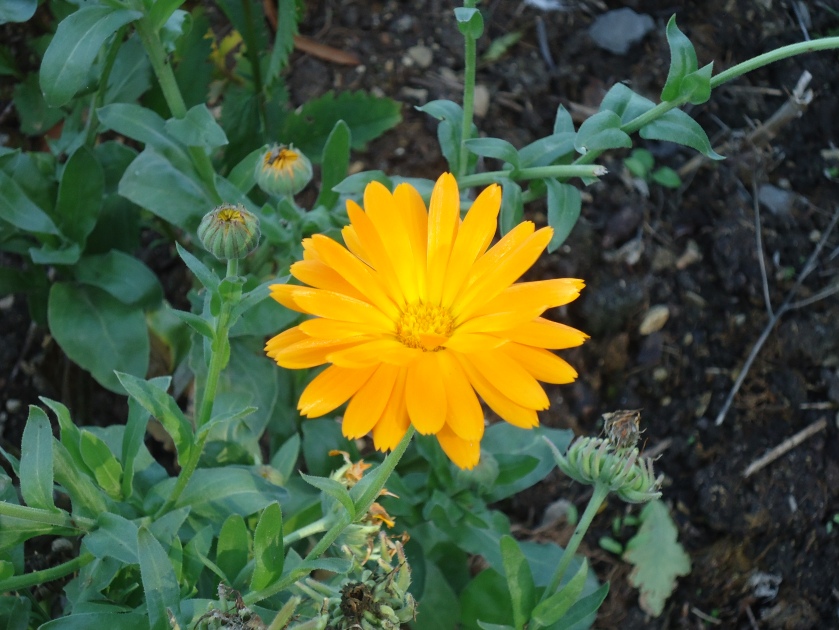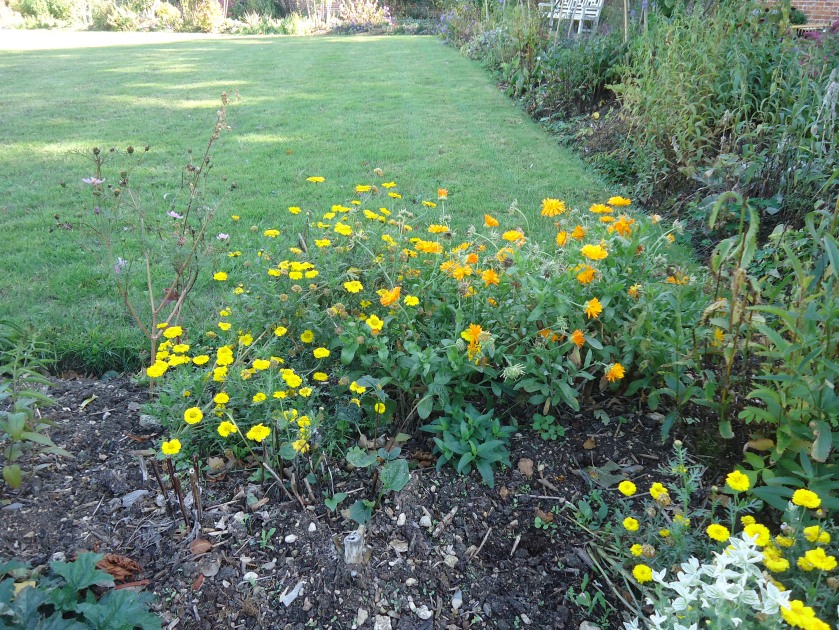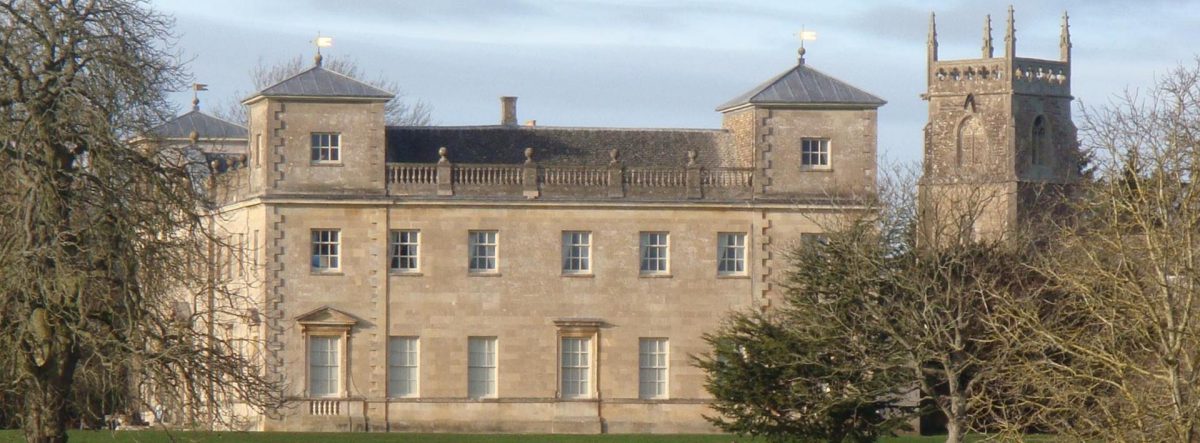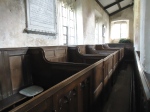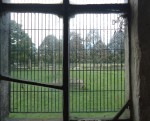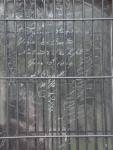St Mary’s Church is jam-packed full of fascinating features. Once you have viewed the fantastic 15th century wall paintings and marvelled at the magnificent St John memorials, have a look at the North Aisle. Dating back to the 14th century the North Aisle is possibly one of the oldest surviving elements in the church.
In 1968 Rev Bryan Carne, the Rector at St Mary’s Church, edited the first of 40 editions of the Friends of Lydiard Tregoz Reports. This first 24 page bulletin was published on July 6 and among the articles was an undated diagram of the seating arrangements in St Mary’s.
Church seating can be dated back to the Anglo Saxon period when it consisted of a basic three legged stool. By the 15th century benches or stalls along the church walls became more common although in the early 17th century stools were still a common form of seating.
Pew renting grew in popularity following the first of the Church Building Acts in 1818 when it was recognised as a legitimate church fund raiser. Pew letting was largely abolished by the end of the 19th century although the practice continued in some areas into the 1950 and 60s. The system came to an end because it was complicated to administer and became increasingly unprofitable. It is not currently known if the tenants of the farms listed in the diagram paid for their pews or whether their position was a traditional one.
The boxed pews in St Mary’s date from c1839 when Rev Giles Daubeney re-ordered the church seating. Rev Daubeney served at St Mary’s for a total of 46 years, first as curate for eight years from 1831 and then as Rector for 38 years until his death in 1877.
During the mid Victorian period the north aisle was known as the Clarendon Aisle, a reference to the land owning Earls of Clarendon. The pew beneath the window was reserved for the tenants at Midgehall Farm and dates from 1680. The boxed pews that run along the wall are something of a cut and pace job, the backs dating from the 17th century and the plain fronts from the 18th.
The name Midgehall means ‘a corner or nook of land infested by midges.’ Although not a description an estate agent would use today, Midgehall has always been a desirable residence. Once a grange or manor belonging to Stanley Abbey Lawrence Hyde, second son of Edward 1st Earl of Clarendon, bought the Midgehall estate in about 1685. It remained in the Clarendon family until 1866 when it was sold to the Trustees of Sir Henry Meux.
The Bradford family were tenants at Midgehall throughout most of the 18th century and at the time of the 1851 census Cornelius Bradford farmed the 360 acres, employing twelve labourers, and served as Mayor of Wootton Bassett as well. His son Richard took over the tenancy after the death of Cornelius in 1852.
Across the other side of the Clarendon Aisle is the Windmill Leaze pew. Known today as Park Farm, Windmill Leaze was the Lydiard estate home farm, supplying the St John family with produce to support their homes in both Battersea and Lydiard.
In 1851 the farm was worked by William Kinchin, his widowed stepmother Martha (described on the census returns as his mother in law) and a cousin also named William Kinchin. The farm comprised 280 acres and William employed nine labourers and a Dairy Maid (Maryann Mills) who lived in the farmhouse. Sixteen year old farm servant Thomas Strang and a visitor, Martha Withers, were at the farm on census night. The Kinchin family were tenants at Windmill Leaze for more than 60 years. By 1911 John Rumming had taken over the tenancy. The Rumming family eventually bought the farm, which they continue to own to this day.
The pews in the main body of the church are entered by doors opening onto the nave aisle. However the pew numbered 4 on the diagram also has a door at the Clarendon Aisle to allow for an overflow of occupants from the Can Court pew.
On the other side of the nave aisle, behind the Clerk’s seat and a pew occupied by the tenant at Brook Farm, Thomas Plummer, and the subsequent owner, Joses Badock, are the pews occupied by Mannington and Toothill Farm tenants.
Mannington, Toothill and Whitehill Farms were acquired by Thomas Sutton in the 17th century to support his foundation, a hospital and school for forty ‘poor’ scholars known as Charterhouse. The farms remained the property of Charterhouse until 1919 when they were sold to the Wiltshire County Council to provide small holdings for soldiers returning from the First World War battlefields.
The windows of the North (Clarendon) Aisle contain fragments of medieval painted glass of various workmen and bear the mark of some 19th century workmen. Edwin Edmonds and Norman Hitchcock etched their names while on the easternmost window of the north aisle wall E.T. Morse Glazier & painter added the admonition in 1805 – ‘He Hiss A fool Likewise A Nave That Rites hiss Name A/pon Glass.
The Rev Carne returned to the subject of the Clarendon Aisle in the Friends of Lydiard Tregoz Report No 38 published in 2005 in which he writes:
“The fact that the north aisle is called the ‘Clarendon Aisle’ and also that it was minimally altered in the 1850s raise the possibility that the aisle was added in the fourteenth century by the lessees of the manor of Midgehall to accommodate those who lived on that manor and that the manor maintained a prescriptive right to the whole of the north aisle.’
Notes on the Fabric and Fittings of St Mary’s Church and Related Matters.
Produced between 1968 – 2007 copies of the Friends of Lydiard Tregoz Reports are held in the British Library, the Bodleian Library and the Society of Antiquaries of London. They are also available somewhat closer to home in Local Studies, Swindon Central Library, Regent Circus.
Sources:
The English Anglican Practice of Pew-Renting 1800-1960 by John Charles Bennett
Friends of Lydiard Tregoz Reports No 1, 11, 23 and 38.



